
Stirling Castle, located in Stirling, is one of the largest and most historically and architecturally important castles in Scotland. The castle sits atop an intrusive crag, which forms part of the Stirling Sill geological formation. It is surrounded on three sides by steep cliffs, giving it a strong defensive position. Its strategic location, guarding what was, until the 1890s, the farthest downstream crossing of the River Forth, has made it an important fortification in the region from the earliest times.

The ruins of Linlithgow Palace are located in the town of Linlithgow, West Lothian, Scotland, 15 miles (24 km) west of Edinburgh. The palace was one of the principal residences of the monarchs of Scotland in the 15th and 16th centuries. Although maintained after Scotland's monarchs left for England in 1603, the palace was little used, and was burned out in 1746. It is now a visitor attraction in the care of Historic Environment Scotland.
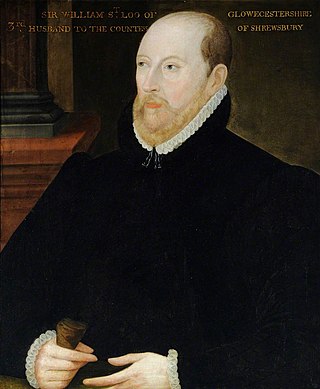
Matthew Stewart, 4th Earl of Lennox was a leader of the Catholic nobility in Scotland. He was the paternal grandfather of King James VI of Scotland and I of England. He owned Temple Newsam in Yorkshire, England.
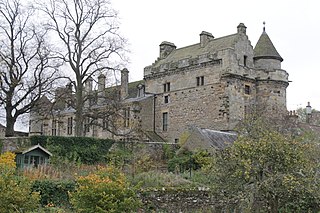
Falkland Palace, in Falkland, Fife, Scotland, is a royal palace of the Scottish Kings. It was one of the favourite places of Mary, Queen of Scots, providing an escape from political and religious turmoil. Today it is under the stewardship of Ninian Stuart, who delegates most of his duties to The National Trust for Scotland. The Chapel Royal in the Palace is dedicated to Thomas the Apostle, and is also open to the public and reserved for Catholic worship.
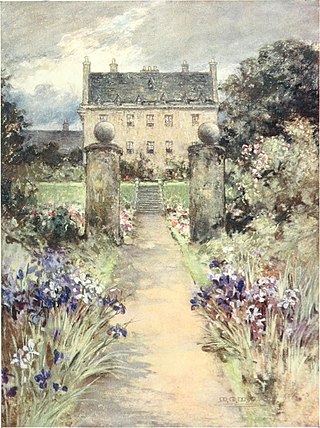
Sir Robert Drummond of Carnock was Master of Work to the Crown of Scotland from 1579 to 1583. This was the responsibility for building and repair of palaces and castles. His appointment was made to be "as Sir James Hamilton of Finnart had it."

The Palace of Holyroodhouse, commonly referred to as Holyrood Palace or Holyroodhouse, is the official residence of the British monarch in Scotland. Located at the bottom of the Royal Mile in Edinburgh, at the opposite end to Edinburgh Castle, Holyroodhouse has served as the principal royal residence in Scotland since the 16th century, and is a setting for state occasions and official entertaining.

Scottish renaissance painted ceilings are decorated ceilings in Scottish houses and castles built between 1540 and 1640. This is a distinctive national style, though there is common ground with similar work elsewhere, especially in France, Spain and Scandinavia. An example in England, at Wickham, Hampshire, was recorded in 1974. There are records of over 100 examples, and a much smaller number of painted ceilings survive in-situ today. Some salvaged painted beams and boards are stored by Historic Environment Scotland. The paintings at Crathes Castle, dating from 1597 and 1602 are probably the best known.

Kinneil House is a historic house to the west of Bo'ness in east-central Scotland. It was once the principal seat of the Hamilton family in the east of Scotland. The house was saved from demolition in 1936 when 16th-century mural paintings were discovered, and it is now in the care of Historic Environment Scotland. The house now consists of a symmetrical mansion built in 1677 on the remains of an earlier 16th- or 15th-century tower house, with two rows of gunloops for early cannon still visible. A smaller east wing, of the mid 16th century, contains the two painted rooms. The house is protected as a Category A listed building.

The Scottish royal tapestry collection was a group of tapestry hangings assembled to decorate the palaces of sixteenth-century kings and queens of Scotland.

Andrew Mansioun, or Mentioun or Manschone or Manson, was a French artist who worked at the court of James V, King of Scots. He was the master carpenter of the Scottish artillery for Mary, Queen of Scots and James VI of Scotland.

John Chisholm, 16th-century Scottish soldier and chief officer, Comptroller and Prefect of the Scottish artillery for Mary, Queen of Scots and James VI of Scotland, and keeper of the King's Wark in Leith. Chisholm was a supporter of Mary, Queen of Scots after her exile in England.
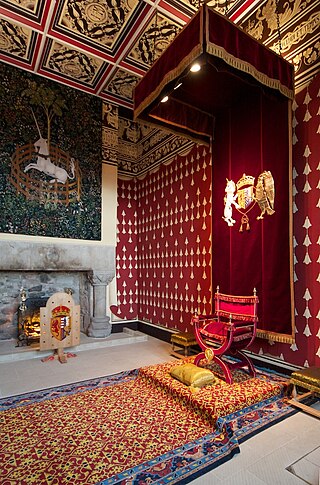
The Masque at the baptism of Prince Henry was a celebration at the christening of Prince Henry at Stirling Castle, written by the Scottish poet William Fowler and Patrick Leslie, 1st Lord Lindores.

Andrew Aytoun, was a Scottish soldier and engineer, and captain of Stirling Castle.
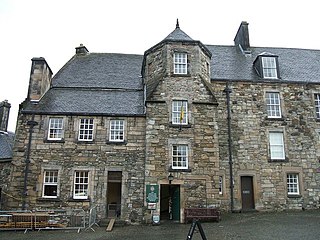
Walter Merlioun, was a Scottish master mason based in Edinburgh.

Henry Wardlaw of Pitreavie (1565–1637) was a Scottish courtier and administrator.
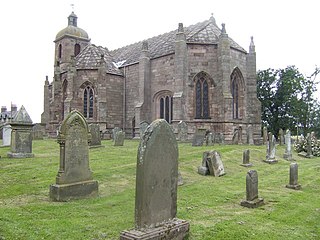
Thomas Peebles or Peblis was a Scottish glazier who worked for James IV, Margaret Tudor, and James V of Scotland.

Some of the remaining and ruined Scottish royal palaces have kitchens, and the halls or chambers where food was served, and rooms where food and tableware were stored. There is an extensive archival record of the 16th-century royal kitchen in the series of households accounts in the National Records of Scotland, known as the Liber Emptorum, the Liber Domicilii and the Despences de la Maison Royale, which are daily records of the purchase of food and drink. The royal kitchens in the 1530s employed around 60 people. Supplies of food for the royal household were known as "furnishing" and were usually managed by the Masters of the Household. Charles II came to Scotland in 1650 and a new Scottish household was created for him, and an account of food and spices survives for his stay at Falkland, Stirling, and Perth, where he may have stayed in the old Gowrie House.
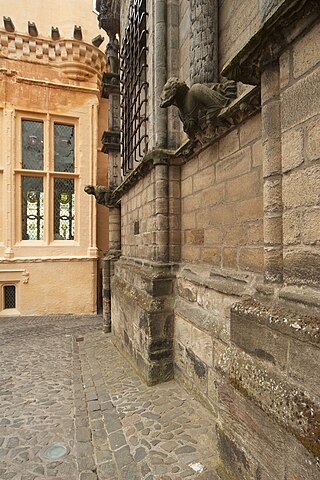
William Hill was a Scottish blacksmith and fabricator of works in iron for James V of Scotland.

Furniture and furnishings in early modern and late medieval Scotland were made locally or imported, mostly from Flanders and France. Although few pieces of furniture survive from the early part of the period, a rich vocabulary and typology is preserved in inventories and wills. This documentary evidence in the Scots language details the homes of the wealthy and aristocratic. Textiles and beds belonging to Mary, Queen of Scots are very well documented.
John Sawers was a Scottish decorative painter based in Edinburgh.




















